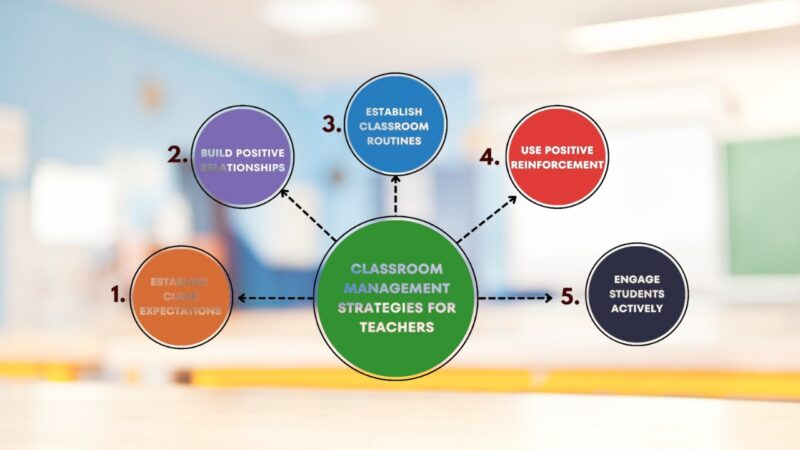Running a classroom, the heart of a student’s learning experience, can be quite a task. This is a space where us teachers have to juggle different student needs, curriculum aims, and practical aspects.
While it may seem intimidating, especially for new teachers (and we’ve all been there), good classroom management is key to building an environment that encourages academic progress, social interaction, and emotional health.
Today we’ll talk about strategies that can help you, regardless of your experience level, to cultivate a well-managed, efficient, and productive learning space. In the following section we’ll mention 14 best classroom management strategies.
1. Setting Clear Expectations
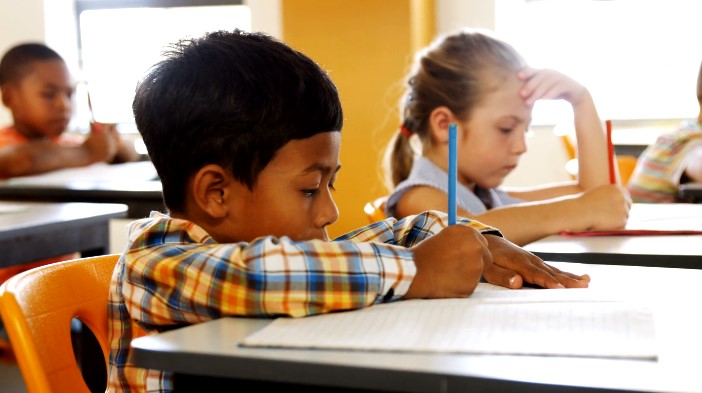
In any environment, understanding the rules and expectations provides a sense of security and predictability. This is particularly true for classrooms, where clarity and consistency are key to fostering a conducive learning environment.
Establishing Rules from Day One
It’s important to establish a set of clear rules from the very first day. By being explicit about what behavior is acceptable and what is not, students have a clear understanding of what’s expected from them.
It’s essential to ensure these expectations are reasonable, relatable, and respectful, providing a strong foundation for the classroom’s social contract. Moreover, explain the consequences that will follow if these rules are breached.
It’s crucial for students to comprehend that these rules are not designed to restrict their freedom, but to ensure an orderly, safe, and respectful environment where everyone can learn.
Regular Reinforcement of Rules
To establish a smoothly functioning classroom, consistency is key. The rules and expectations set out at the start should not be one-time statements but need regular reinforcement throughout the academic year. Especially after extended breaks, or when disruptive incidents occur, take the time to review these rules.
Keep in mind that such reinforcement should be framed positively and constructively, focusing more on the benefits of adhering to the rules rather than the punitive measures following a breach. This approach helps maintain an orderly classroom without making it feel like a rigid, punitive setting.
2. Creating a Positive Learning Environment
The creation of a positive learning environment, one that encourages and nurtures academic exploration, is a fundamental aspect of effective classroom management.
Promoting Respect and Collaboration
To create an inclusive and respectful classroom culture, educators should promote an environment of collaboration and mutual understanding. Implement activities that involve group dynamics, encouraging students to work together, learn from each other, and appreciate varying perspectives.
This not only aids in knowledge absorption but also fosters essential life skills such as teamwork, cooperation, and respect for diversity.
Celebrating Success
Celebrating student achievements, regardless of the scale, plays a significant role in motivating and encouraging students. By acknowledging their efforts and successes, you boost their morale and encourage them to continue putting effort into their work.
Various techniques can be used to celebrate these achievements, from simple verbal praise to more structured methods like recognition boards or tangible rewards. The important thing is to create a culture where effort is acknowledged and success is celebrated.
3. Maintaining Teacher-Student Relationships
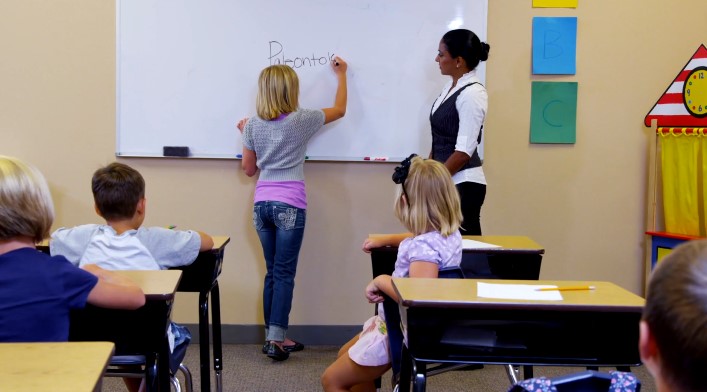
The quality of the relationship between a teacher and their students can significantly influence the atmosphere and, in turn, classroom management.
Communication
Regular, open communication with your students is crucial. By showing interest in their lives outside the classroom, you not only establish a connection with them but also gain insights into their unique challenges and strengths.
This connection facilitates trust and makes students feel seen and heard, which can positively impact their academic performance and engagement.
Empathy
Empathy, the ability to understand and share the feelings of others, is a powerful tool in managing a classroom. Teachers who display empathy towards their students’ struggles can create a more supportive and inclusive environment.
This can build stronger teacher-student relationships and foster a more positive learning environment. Remember, each student is unique, and what works for one might not work for another. The importance of an empathetic understanding of this fact cannot be overstated.
4. Implementing a Variety of Teaching Methods
A one-size-fits-all approach doesn’t work in education. Recognizing that different students have different learning styles and adjusting your teaching methods accordingly can greatly enhance student engagement and, consequently, classroom management.
Incorporating Visual, Auditory, and Kinesthetic Methods
An effective teacher knows that each student has a unique learning style. Some may be visual learners, some auditory, and others kinesthetic. Incorporating a variety of teaching methods into your lesson plans can cater to these diverse learning styles.
For example, diagrams and videos can be used to explain concepts to visual learners, discussions and music can benefit auditory learners, while hands-on activities can engage kinesthetic learners. This diversification not only makes the lessons more engaging but also ensures that all students can benefit from the instruction.
Integrating Technology
In the 21st century, technology can play a transformative role in managing a classroom. From educational software and online quizzes to virtual reality experiences, technology can make learning more interactive and enjoyable.
Additionally, technological tools can help monitor students’ progress, provide personalized learning experiences, and aid in effective classroom management.
5. Dealing with Disruptive Behavior

Despite the best efforts, even the most well-managed classrooms can encounter disruptive behavior. The ability to handle these situations tactfully is an integral part of effective classroom management.
Identifying the Cause
If a student frequently disrupts the class, it’s essential to delve deeper and identify the root cause. Is the disruptive behavior due to boredom, a desire for attention, or a lack of understanding of the material? By understanding the cause, you can address the issue in a more targeted and effective way.
Implementing Consequences
When a student breaks a rule, it’s essential to follow through with the predetermined consequences. This reinforces the importance of rules and establishes the seriousness of maintaining good manners. However, it’s critical that these consequences are fair, proportionate, and always explained to the student.
The goal is not to punish but to correct and educate.
6. Planning and Preparation
Preparation, in terms of both lesson plans and the physical classroom, is very important.
Lesson Preparation
A well-prepared lesson is likely to flow smoothly and be more engaging, thus reducing opportunities for disruptive behavior. When planning your lessons, ensure they are interactive, engaging, and designed to cater to different learning styles.
Your lesson plan should also include clear objectives, and it’s always a good idea to have a backup activity ready in case you finish early or activity doesn’t go as planned.
Classroom Layout
The physical layout of your classroom can significantly influence the learning process and dynamics. A thoughtful seating arrangement that promotes interaction and makes it easy for you to move around can greatly aid classroom management.
When designing your layout, consider factors such as the specific needs of your students, the nature of tasks to be undertaken, and the available space.
7. Using Time Effectively
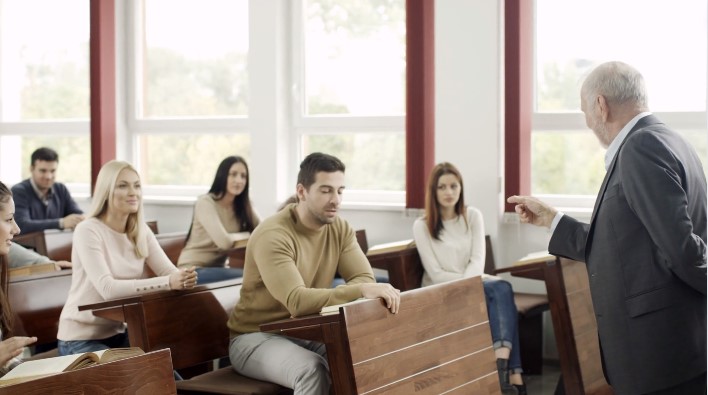
Time is a valuable resource in the classroom, and its effective management can significantly enhance the learning experience.
Starting and Ending on Time
Ensure that your lessons always start and end on time. Not only does this help maintain a routine, but it also sends a message to students about the importance of punctuality.
However, starting and ending on time doesn’t mean rushing through your lesson. Instead, effective time management within the lesson, such as providing clear instructions, minimizing transition time, and maintaining a steady pace, can ensure that every minute is used productively.
Allocating Time for Breaks
While it’s important to make the most of every teaching moment, don’t forget to allocate time for short breaks. Regular breaks can refresh and refocus the students, thus enhancing their concentration and productivity.
These breaks can also be a great time to build rapport with your students and discuss non-academic topics.
8. Encouraging Student Autonomy
Students who are engaged and invested in their learning tend to exhibit better behavior and perform better academically. One way to foster this is by encouraging student autonomy.
Student Choice
Providing opportunities for students to make decisions in their learning process can foster a sense of ownership and responsibility. This could involve allowing them to choose their project topics, the method of presenting their work, or even letting them have some say in setting classroom rules.
The autonomy nurtures their critical thinking, decision-making skills, and can significantly enhance their engagement with the learning process.
Self-regulation
Teaching students to self-regulate their behavior is an important aspect of fostering autonomy. Instead of relying solely on external control (teacher-imposed rules and consequences), students are taught strategies to monitor and manage their behavior.
This could involve setting personal goals, self-reflection, or mindfulness practices. Over time, this helps students take responsibility for their actions, leading to a more self-regulated and harmonious classroom environment.
9. Utilizing Classroom Routines
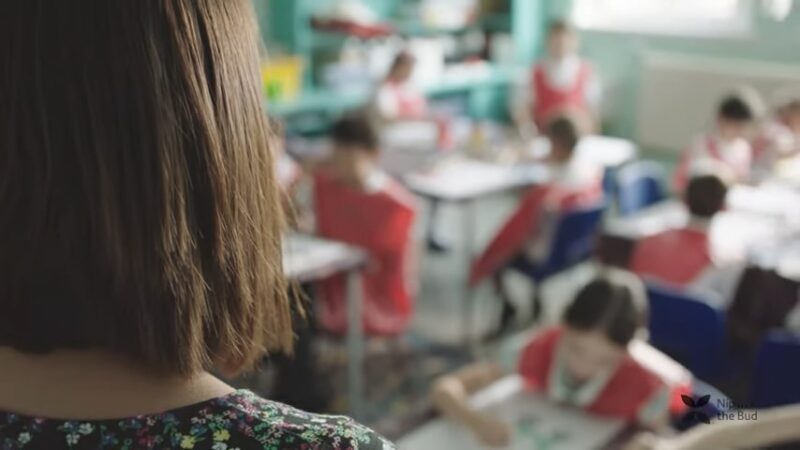
Classroom routines can play a significant role in creating a structured, predictable environment, which can have a positive impact on classroom management.
Developing Consistent Routines
Consistent routines help create a sense of order and predictability in the classroom. This could be as simple as starting the day with a certain activity, having a set schedule for tasks, or a specific way of wrapping up the lessons.
Routines provide a structure that students can rely upon, reducing anxiety and confusion and thus leading to a more manageable classroom.
Reinforcing Routines
Just like rules, routines also need to be reinforced regularly. Discuss them with your students, explain why they are in place, and ensure everyone is aware of what they are.
Over time, these routines will become second nature, reducing the amount of time you spend on classroom management and increasing the time you can devote to instruction.
10. Providing Constructive Feedback
Feedback is an integral part of the learning process. The way feedback is provided can influence students’ motivation and their attitude towards learning.
Timely and Specific Feedback
Ensure that the feedback you provide is timely and specific. Instead of simply telling a student their work is ‘good’ or ‘needs improvement,’ provide specific details about what they did well and areas where they can improve.
This not only validates their effort but also gives them clear guidance on how they can improve. Timely feedback, given soon after the task is completed, is more likely to be understood and applied.
Encouraging Peer Feedback
Encouraging peer feedback not only reduces the feedback burden on the teacher but also fosters a sense of responsibility and critical thinking among students. By evaluating others’ work, students are likely to gain a deeper understanding of the subject and the criteria for success.
However, it’s important to establish clear guidelines for providing constructive feedback to ensure this process is respectful and productive.
11. Teaching Social and Emotional Skills
Social and emotional skills are as important as academic skills for a student’s overall development. By teaching these skills, you not only prepare students for their future beyond the classroom but also create a more understanding and supportive classroom environment.
Embedding Social-Emotional Learning
Social-emotional learning involves teaching students skills such as empathy, self-awareness, and problem-solving. These can be embedded into your teaching through activities such as role-play, group projects, or through explicit SEL curriculum.
Modeling Behavior
As a teacher, you play a significant role in shaping your students’ behavior. Displaying the behaviors you want your students to adopt, such as respect, kindness, and patience, can be a powerful teaching tool. Remember, students are more likely to emulate what you do rather than what you say.
12. Engaging Parents and Caregivers
Parents and caregivers play an important role in a child’s education. If you engage them effectively, you can create a supportive network around the student, enhancing their learning experience.
Regular Communication
Regular, open communication with parents and caregivers is crucial. This can be achieved through parent-teacher meetings, newsletters, emails, or even digital platforms. Share not just academic progress but also any behavioral issues or concerns.
This not only keeps them informed but also allows them to support their child’s learning at home.
Involving Parents in Classroom Activities
Involving parents in classroom activities or school events can provide them with insights into their child’s learning environment. It also fosters a sense of community and collaboration, which can have a positive impact on student learning and behavior.
13. Incorporating Student Interests
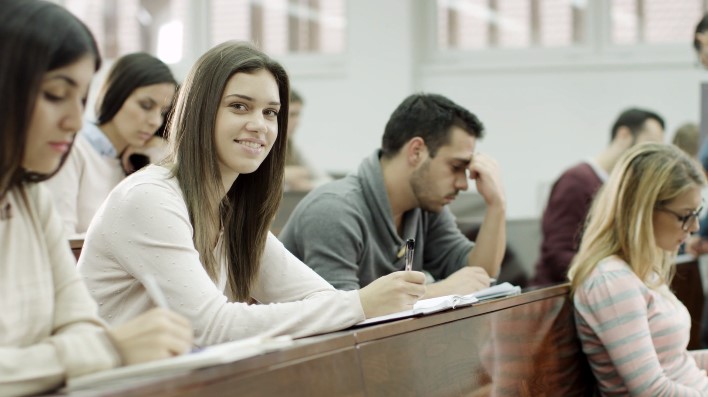
By incorporating students’ interests into your teaching, you can make learning more relevant and engaging for them.
Discovering Student Interests
Take the time to discover your students’ interests, passions, and hobbies. This can be achieved through discussions, surveys, or simply by observing them. That way you can make your teaching more relevant and engaging for them.
Incorporating Interests into Lessons
Once you understand your students’ interests, find creative ways to incorporate them into your lessons. This could involve using real-life examples related to their interests, choosing texts that align with their passions, or designing projects around their hobbies.
By doing this, you not only make learning more enjoyable but also enhance their engagement and motivation.
14. Cultivating a Growth Mindset
Cultivating a growth mindset, the belief that abilities and intelligence can be developed with effort and practice, can greatly enhance student motivation and resilience.
Teaching About the Brain and Learning
Educate your students about the brain and the concept of neuroplasticity, the brain’s ability to change and adapt. This can help them understand that intelligence and abilities are not fixed, but can be developed with effort and persistence.
Encouraging Persistence and Effort
Instead of just praising students for their achievements or innate abilities, focus on their effort, persistence, and strategies. This helps to cultivate a growth mindset, where they see challenges as opportunities for learning, and failures as stepping stones towards success.
What are the benefits of good classroom management?
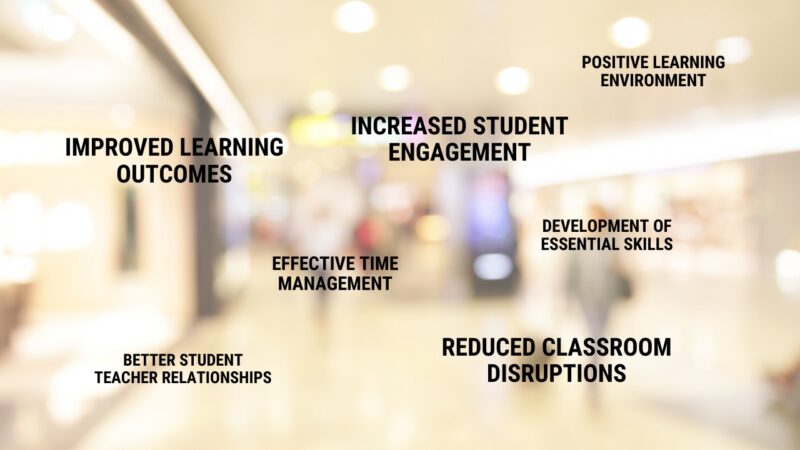
| Importance of Classroom Management | Description | Estimated Impact on Learning Process (%) |
|---|---|---|
| Improved Learning Outcomes | Creates an environment conducive to learning, leading to improved student outcomes. | 25% |
| Positive Learning Environment | Promotes respect, collaboration, and mutual understanding among students and between the teacher and students. | 15% |
| Increased Student Engagement | Students participate more actively in discussions, projects, and other activities. | 20% |
| Effective Time Management | Ensures that academic activities are carried out within the set timeframe, leading to more efficient use of time. | 10% |
| Development of Essential Skills | Helps students develop discipline, responsibility, problem-solving, and interpersonal skills. | 15% |
| Reduced Classroom Disruptions | Significantly reduces disruptions, ensuring that learning is not interrupted. | 10% |
| Better Student-Teacher Relationships | Fosters better relationships between students and teachers. | 5% |
FAQs:
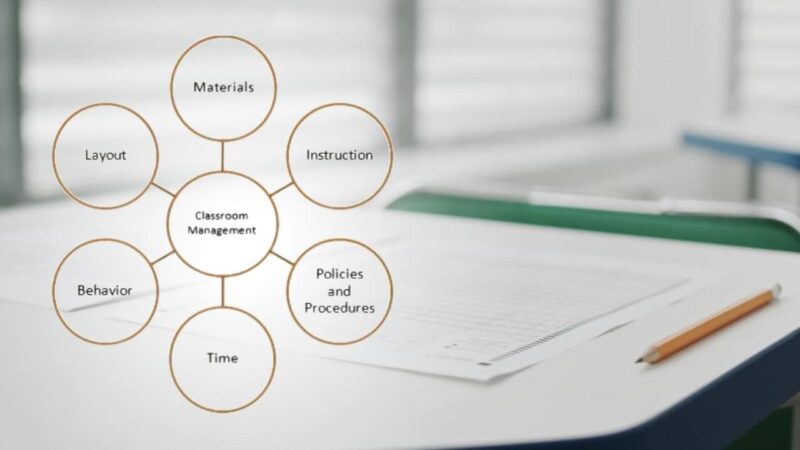
What are classroom management skills?
Classroom management skills help teachers run their classrooms smoothly and create a positive learning environment for their students. These skills include creating a happy classroom, capturing student’s attention, maintaining a quiet classroom, and implementing positive discipline.
What are the benefits of a classroom management plan?
This plan provides benefits such as creating quality lessons, getting students used to rewarding and reinforcing good behavior, giving students autonomy in making their own decisions, and helping students and teachers understand and adhere to each other’s boundaries.
What are teaching soft skills?
Teaching soft skills helps students cope better with crises, and improve listening skills leading to care, empathy, and a better understanding of situations and people. These skills are taught through group projects and teamwork, learning and assessment, experimental learning techniques, note-taking and self-reflections, and peer review.
Why are soft skills important in classroom management?
They are important as they help students cope better with crises, improve listening skills, and lead to a better understanding of situations and people, thereby making it easier to manage the class.
What are online learning student engagement strategies?
Online learning student engagement strategies improve virtual presentations and keep students engaged. Techniques include classroom quizzes, games & activities, flipped role presentations, and collaborative tasks for students.
Final thoughts
Effective classroom management is a process that requires a blend of strategies and a willingness to continuously learn and adapt. The strategies outlined above provide a solid foundation, but remember, every classroom is unique.
As a teacher, you are in the best position to understand your student’s needs and tailor these strategies accordingly. Embrace this challenge and view it as a journey of growth, for both you and your students.
After all, a well-managed classroom is not the end goal, but a means to create a supportive and engaging environment where every student can learn and thrive. And there is nothing more rewarding than seeing our students leaving the classroom with a smile on their faces.
